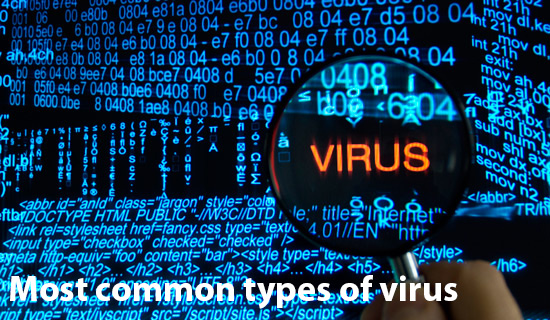Most common types of virus
A computer virus is a program, script, or macro designed to cause damage, steal personal information, modify data, send e-mail, display messages, or some combination of these actions.
When the virus is executed, it spreads by copying itself into or over data files, programs, or boot sector of a computer’s hard drive, or potentially anything else writable. To help spread an infection the virus writers use detailed knowledge of security vulnerabilities, zero days, or social engineering to gain access to a host’s computer.
The most common types of virus:
- Invasive virus:Can replace itself with some modules or stack areas in the normal program. Therefore, these viruses only attack some specific procedures, targeted. Under normal circumstances difficult to find, remove them more difficult.
- Embedded virus:The virus will own code embedded in the infected file, when the file is infected, killing and removal of the virus are very easy. However, the preparation of embedded virus more difficult, so the number of small viruses.
- Shell-like virus:The virus will own code attached to the head or tail of the normal procedure. A wide variety of such viruses, most of the virus infected files are of this type.
- Virus generation tools:Usually driven by the form of a menu, as long as people have a little computer knowledge, the use of virus generation tools can be as easy as a la carte to create a computer virus, and can design a very complex with theft and pleomorphic characteristics of the virus.
- DOS virusThis category is for viruses that run under the DOS Operating system.
![]()

